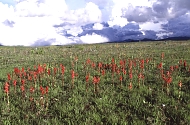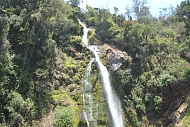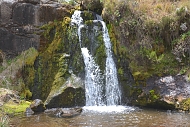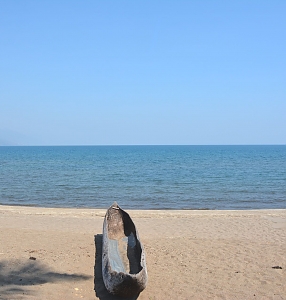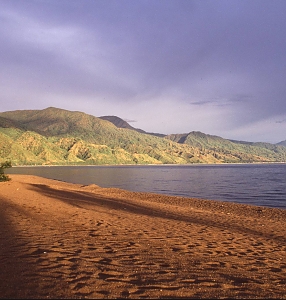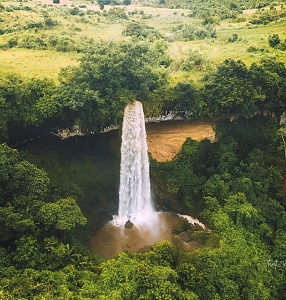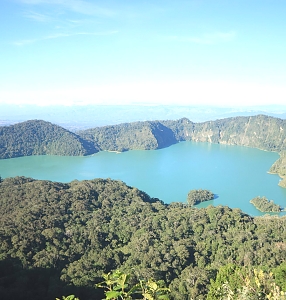Kitulo National Park
Kitulo National Park
Locals refer to the Kitulo Plateau as Bustani ya Mungu – The Garden of God – whereas botanists have dubbed it the Serengeti of Flowers, host to ‘one of the great floral spectacles of the world’, and only of its kind in Africa where wild flowers, birds and harmonious grass eating mammals are dominating
Kitulo is indeed a rare botanical marvel, home to wildflowers for six months of the year, from November to April. There is a documented 350 species of wild flowers including lilies and fields of daisies. 45 endemic orchid species are found only in the park than any other part of the world, from June to August the entire park is foggy with no visibility during the daytime, and it is hardly possible to view its beauties.
Perched at around 2,600 metres (8,500 ft) between the rugged peaks of the Kipengere, Poroto and Livingstone Mountains, the well-watered volcanic soils of Kitulo support the largest and the most important montane grassland community in Tanzania.
Although sparse in big game, this natural botanical garden is highly alluring to bird watchers who thrill to sightings of rare Denham’s bustard, the endangered blue swallow, mountain marsh widow, Njombe cisticola and Kipengere seedeater.
Endemic species of butterfly, chameleon, lizard and frog further enhance the biological wealth of God’s Garden. Unique and the only of its kind in Africa for natural orchids and birds, this park has been gazetted last year set for tourists.
Open walking safaris through the grasslands watching birds and wild flowers, hill hiking on the neighboring ranges during the day, gives a visitor fantastic views of Lake Nyasa and its beautiful Matema Beach down the mountains.
When full flocked, Kitulo National Park will be the leading nature conservation park in Africa, specializing on orchid holidays with less wildlife itineraries. It will add a new product to Tanzania’s wildlife-based tourism, which so far, has been competing with other destinations like Kenya, Zimbabwe, Botswana, Namibia and South Africa.
Because of its cool and moderate weather similar to Mediterranean or European conditions, the area has since then attracted a number of British and American settlers in 1920’ who reared livestock and practiced small scale tourist projects.
Mount Livingstone Forest
Some of the tree species in the forest are Hagenia abyssinica, Ocotea usambarensis, Juniperus procera, and Khaya anthoceca. The forest is also characterised by mountain Bamboo, (Sinarundinaria alpina).
Kitulo is rich in flora species with 350 species of high plants recorded, including 45 species terrestrial Orchids, of which 31 species are endemic to Tanzania, 16 are endemic to Kitulo and Poroto Mountain sand at least 3 species are endemic to Kitulo national park.
Two species are only known to be in Kitulo and adjoining forest. The abundance of plants in the wet season has been described as the greatest flora marvel of the World.
Nhumbe Valley
This is often referred as the jewel of the Park, where small streams emerge from the grassy hill sides sometimes cascading down in little waterfalls, thus forming the head waterfall for Nhumbe river, one of the main tributary of the Great Ruaha River.
The gap of the valley is occupied by Juniper forest, one of the most extensive in East Africa. They tower to 50 m high and are indeed the tallest junipers in the world.
Nhumbe Waterfall
Its height is approximately 100 meter. The waterfall is 20 km from Mwakipembo main gate and takes one hour to walking down the waterfall and up to the picnic site. You can cool your body there and take brilliant photos.
Mwakipembo Waterfall
It is located along the road to Nhumbe valley 4 km from mwakipembo main gate, its height is 8 meters. The area is characterized by orchid flowers, everlasting flowers, Erica plants and Clematopsis uhehensis.
Caves
Mlivili cave is located along Matamba Ridge after Mwakipembo water fall and Usalama cave is about 8 kilometers away from Common works Junction, the road to Mbeya via Isyonje.
During those days of intertribal war, the caves were used as the hiding point by indigenous people from Wawanji, Wakinga and Nyakyusa from Mwakaleli. Now days, these area are used as poachers hides.
FAQs
Kitulo National Park
The park can be accessed from Mbeya town, which is about 110 Km away via Chimala road and 70 Km via Isyonje road. It is about 90 Km from Songwe Airport. The park can only be reached by road.
By Air: Through Songwe Airport; 90 kms via Isyonje and 125 via Chimala small town to Kitulo.
By Road: Mbeya city-Isyonje- Kitulo is 70 kms: Mbeya city-Chimala-Kitulo is 103 kms: Njombe town-Ikonda-makete-Kitulo 165 kms.
By Railway: Through railway transport Tanzania-Zambia (TAZARA), Iyunga and Makambako stations
Songwe airport is an airport in the southern highlands region of Tanzania serving the city of Mbeya and the nearby regions. It is able to accommodate commercial jet traffic. The services of domestic flights are provided by Air Tanzania, Precision air, Fast jet and Tropical air.
The peak season to see wildflowers is between December and April. From September to November, the season remains sunny and offer comfortable hiking, but disheartening for botanists. From June to August the season is cold and foggy
The climate is influenced by altitude, Lake Nyasa and is largely temperate. The maximum daily temperature varies from 14.5°c to 18°c and minimum ambient temperature ranges from 7°c to 8°c between December and April, and can go as low as 0.5˚c during June to August ,during this period frost occurs. The average annual rainfall is 1600mm ranging from 1500 – 1700mm. The rain season begins from October to May.
Destinations near Kitulo National Park
These nearby destinations have a lot to offer






